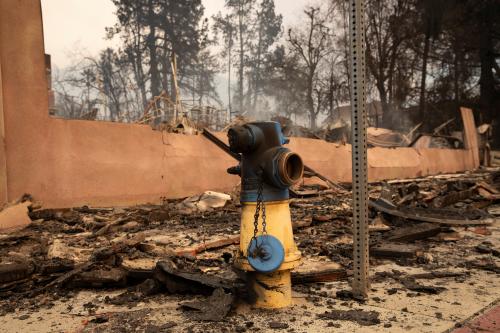Kenya’s first national wildlife census, South Africa ends captive lion breeding, and Zimbabwe intends to reintroduce rhinos to its wildlife parks
Last Friday, Kenya began conducting its first-ever national wildlife census. The $2.3 million conservation project aims to improve knowledge about wildlife population distribution and sizes, identify threats to the animals, and develop conservation strategies to protect them. While Kenya’s most vulnerable species such as elephants and rhinos, are counted regularly, the project will be the first systematic counting of other rare animals across the country. Researchers anticipate collecting data on wildlife in Kenya’s less populated and less frequented northern parks where cataloged wildlife remains limited. The inauguration of Kenya’s national wildlife census comes amid notable declines in wildlife populations caused by, among other things, the expansion of human settlements, climate change, and poaching.
Last week, South Africa’s Ministry of Forestry, Fisheries and the Environment announced that it will outlaw captive lion breed for economic gain, citing a ministry-appointed review panel’s conclusion that captive lion breeding risks wild lion conservation efforts. The captive lions are bred for hunting, tourist interactions (cub petting), and the sale of “lion derivatives” such as bones. The ministry speculates that ending captive lion breeding will benefit South Africa’s wild hunting industry, offsetting initial concerns within the country’s hunting industry. The hunting industry generates approximately $250 million per annum and supports 17,000 workers.
In related news, Zimbabwe plans to reintroduce rhinos to its wildlife parks for the first time in 30 years. Gonarezhou Park, the country’s second-largest wildlife park and part of the Great Limpopo Transfrontier Park—a transnational nature reserve between South Africa’s Kruger National Park, Mozambique’s Limpopo National Park, and Zimbabwe’s Gonarezhou—is set to be home to an undisclosed number of reintroduced rhinos. After a sharp decline in Zimbabwe’s rhino population due to poaching, the country maintains the continent’s fourth-largest population of rhinos, at about 1,000 rhinos.
Security in the Horn of Africa continues to deteriorate
This week, the African Union’s (AU) Peace and Security Council voted to extend the mandate of the African Union Mission to Somalia (AMISOM) to the end of this year. The next step in the process is for the United Nations Security Council to actually grant the mandate to AMISOM, on which it will vote next month. Also this week, the AU announced it has appointed former Ghanaian President John Mahama to be its high representative to Somalia in order to mediate between the parties that continue to disagree on the country’s electoral processes. Earlier this month, Somali President Mohamed Abdullahi Mohamed announced he was reversing a recent controversial decision to extend his term by two years in reaction to the election stalemate. On Saturday, the country’s parliament officially voted to overturn the extension as well. In response, troops opposing the president stood down and returned to their barracks this week.
Meanwhile, Ethiopian lawmakers on Monday voted to designate both the Oromo Liberation Army and the Tigray People’s Liberation Front as terrorist organizations. Also this week, the United Nations confirmed that Eritrean troops, often donning old Ethiopian military uniforms, were blocking the delivery of aid to the Tigray region. In fact, on May 13, U.N. spokesperson Stephane Dujarric confirmed that aid was not reaching its intended recipients: “Of the three million people targeted to receive emergency shelter and nonfood items, only 347,000 people, that is about 12 percent, had been reached since 3 May. With the start of the rainy season, our humanitarian colleagues warn that it is critical that aid agencies can provide minimal dignified shelter for the displaced,” he said. According to both the U.N. and the Ethiopian government, at least 5.2 million people out of 5.7 million in the Tigray region are in need of emergency food assistance.
For more on the complex situations in both Somalia and neighboring Ethiopia, please join Brookings on May 20 for the virtual event, “Elections and crises in Somalia and Ethiopia.”
Democratic Republic of Congo secures infrastructure funding from the World Bank
Reuters reported on Wednesday that the World Bank signed a $500 million infrastructure project with the Democratic Republic of Congo (DRC). The World Bank officials expressed hope that the deal would help improve road quality, reduce flood risks, and develop public spaces in the capital. The World Bank’s press release conveyed that the Kinshasa Multisector Development and Urban Resilience Project (Kin Elenda) will benefit the most vulnerable urban populations in Kinshasa by improving the provision of water and strengthening the resilience of the electrical grid. The press release also highlighted the project’s aim to address gender inequality by enhancing women’s socioeconomic conditions and reducing gender-based violence.
The World Bank research highlights the difficulties associated with infrastructure investment in the Democratic Republic of the Congo. Kinshasa faces the most daunting infrastructure challenge on the African continent. Aside from being one of the most crowded cities in the Democratic Republic of Congo (and sub-Saharan Africa), policymakers often have to work around damages caused by various conflicts. Furthermore, the World Bank notes that the Democratic Republic of the Congo’s infrastructure needs are among the highest in the world.
The Brookings Institution is committed to quality, independence, and impact.
We are supported by a diverse array of funders. In line with our values and policies, each Brookings publication represents the sole views of its author(s).







Commentary
Africa in the news: Wildlife, Horn of Africa, and infrastructure updates
May 15, 2021